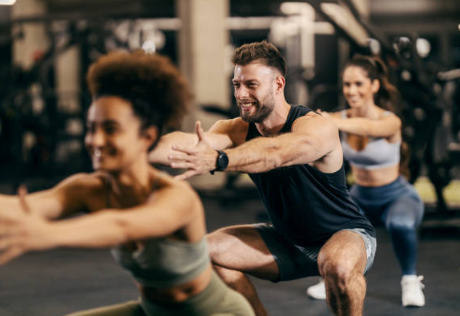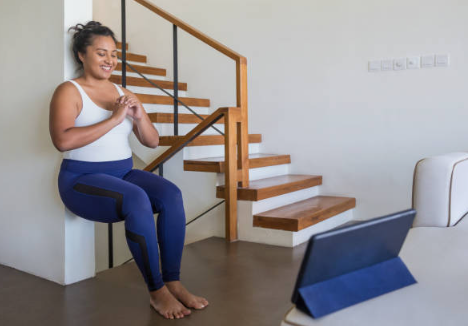Ah, squats. Love ‘em or hate ‘em, they’re one of the most important moves in your fitness routine—and definitely worth mastering. Squats are a functional movement, meaning they mimic motions we use every day. Picking up your kids (or their toys), lifting boxes, tying your shoes, or—dare we say—using the bathroom… all of it involves squatting!
So if you’re not already doing squats, now’s the time. And if you are, it’s worth learning how to improve your form.
The Benefits of Proper Squat Form
We’ve been squatting since we could walk. Squats work your lower body—glutes, hamstrings, and quads—but they also strengthen your entire body when done right. A strong core is key to proper squat form, and surprisingly, squats can actually help with knee pain—not cause it.

That’s right: contrary to popular belief, squats can be good for your knees—if done with good form. Strengthening the muscles around the knees reduces injury risk and improves joint health. And when you start adding weights like barbells into the mix, your form becomes even more important to avoid injury and maximize results.
Squatting with good technique helps build total-body strength and makes everyday movements (like standing up from a chair) way easier.
10 Steps to Improve Your Squat Form
Ready to get low? Let’s dive into how to perfect your squat.
1. Start With a Solid Base
Before you add weight or advanced variations, focus on perfecting your basic squat setup:
-
Stand with your feet about shoulder-width apart
-
Point your toes slightly outward
-
Keep your weight in your heels (your toes should be able to wiggle!)
If this feels tricky, work with a coach or trainer to adjust for your body. Everyone’s anatomy is a little different, and you may need to tweak your stance to find your ideal form.
2. Use Support to Build Confidence
If you’re new to squats or working on depth, try assisted squats. Hold onto a doorframe at home, or use TRX straps at the gym to support your weight and squat deeper with confidence.
Here’s how:
Start in your squat stance, arms extended holding the support. With a straight back, bend your knees and push your hips back. Lower until your thighs are about parallel to the floor. Then drive through your heels to return to standing—keep your back straight throughout.
3. Engage Your Core
Your legs aren’t doing all the work—your core is crucial. Before each squat, take a deep breath and brace your core like you’re preparing for a punch. This helps generate power and keeps your spine supported throughout the movement.
4. Keep Your Chest Up
As you squat, push your hips back and keep your weight in your heels. Lift your chest, maintain a neutral spine, and avoid collapsing forward. This ensures max strength and takes unnecessary pressure off your lower back.
5. Drive Your Knees Outward
To protect your knees, make sure they track in line with your feet—not caving in or drifting too far out. As you rise from the bottom of the squat, gently push your knees outward to activate the right muscles and keep your joints happy.

6. Transition to Bodyweight Squats
Once you’ve nailed assisted squats, move to unassisted bodyweight squats. Your hands can be in front of you (like a prayer) or overhead for an overhead squat challenge.
7. Improve Ankle Mobility
Tight ankles can mess with your squat depth and cause compensations elsewhere in your body. To improve ankle mobility, try ankle circles, banded stretches, or mobility drills in your warm-up. More ankle flexibility = deeper, safer squats.
8. Work on Hip Mobility
Your hips are key to a strong squat. Tight hips can lead to poor depth and even back pain. On squat days, warm up with 90/90 stretches or controlled hip rotations to improve flexibility and range of motion.
9. Train Thoracic Spine Mobility
Your thoracic spine (upper/mid-back) helps support proper posture and control during loaded squats. Exercises like thread-the-needle stretches can improve mobility and help you hold weight more comfortably and safely.
10. Add Weight—Carefully
Once you’ve mastered the basics, it’s time to load up. Start light with dumbbells or a barbell, and increase weight gradually. You want it to challenge you—but never at the cost of good form. Quality over quantity, always!
Final Thoughts
Improving your squat form takes practice, patience, and body awareness—but the payoff is worth it. Better strength, more confidence, healthier joints, and functional power that carries over into everyday life.
So the next time leg day rolls around, get excited to squat smarter—not just harder.